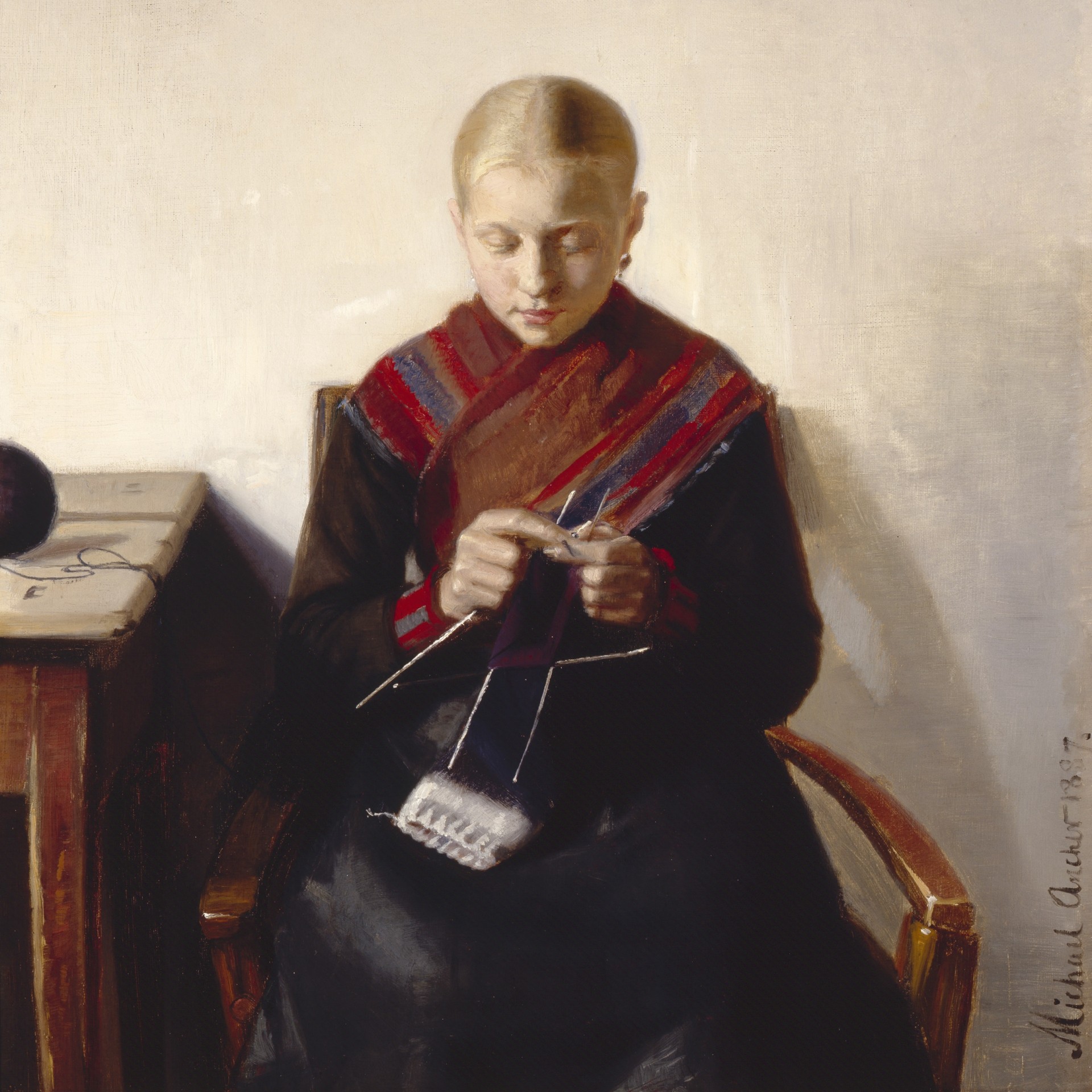Needle & Thread - Craft in Art
The exhibition Needle & Thread – Craft in Art explores the role of working hands in Danish art from the 19th century to today. The exhibition presents a wide range of artists who, across time and place, motif and medium, work at the intersection between art, craft and artisan traditions.
For centuries, needlework has been a central part of women’s domestic work, as well as an essential source of income for both rural men and women. During the industrialization, textile factories sprang up all over the country, including Bechs Klædefabrik in Hjørring, which from 1894-1979 was housed in the building that now houses Vendsyssel Museum of Art.
Danish painting from the 19th century is full of knitting and sewing woman, representing different social backgrounds. These works reflect how textile- and needlework have been viewed primarily as women’s work. This perception has contributed to the marginalization of modes of expression such as weaving and embroidery, which have not been granted the same status in the artistic hierarchy as the so-called fine arts such as painting and sculpture.
Nevertheless, several artists throughout the 20th century have worked with textiles and craft – and especially weaving. These pioneering artists experimented with materials, techniques and mode of expression and transformed yarn into original works of art that highlight the artistic potential of craft.
Craft has also found its way into contemporary art, where a growing number of artists work with needle and thread, yarn and weaving, breaking down traditional divisions between artistic media and combining them in innovative ways.
The exhibition and publication are supported by: Statens Kunstfond, Aage og Johanne Louis Hansens Fond, Knud Højgaards Fond, Toyota Fonden, Lemvigh-Müller Fonden, Overretssagfører L. Zeuthens Mindelegat og Beckett-Fonden.


